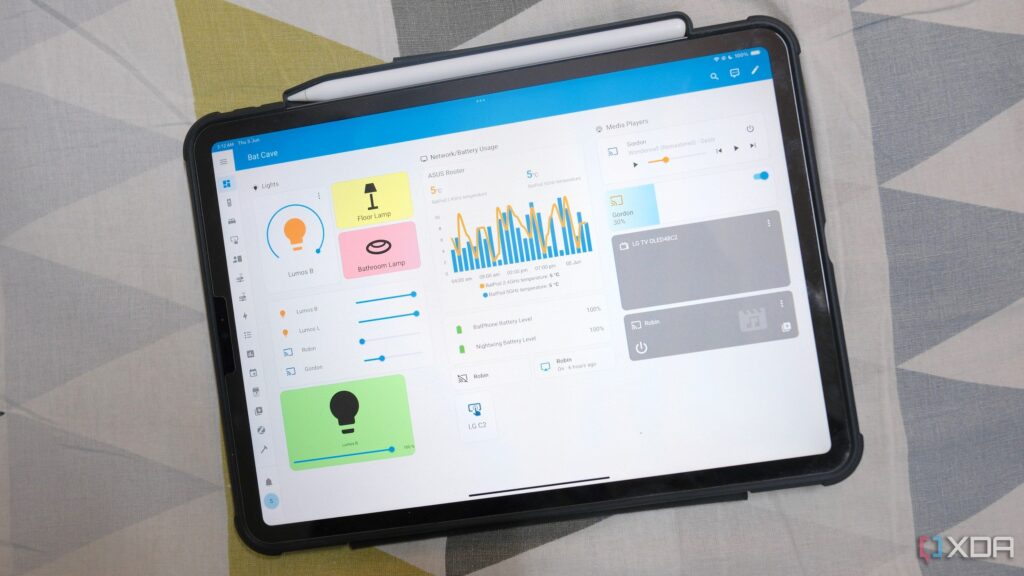
In an era where smart homes are becoming increasingly prevalent, many users encounter unexpected behaviors from their devices. Common issues include lights flickering at unusual hours, plugs cycling unexpectedly, or cameras connecting to unknown servers. In response to these concerns, one tech enthusiast has implemented a dedicated headless Linux virtual machine (VM) using Proxmox to monitor these devices effectively, ensuring constant visibility and security.
Understanding Device Behavior in Smart Homes
The concept of “bad behavior” in smart devices is often subtle rather than overtly alarming. For instance, a light turning on when it shouldn’t or a plug cycling on and off for no apparent reason can indicate underlying problems. More concerning is when a camera restarts several times an hour, which may signal instability or an unauthorized cloud connection. Each of these small events contributes to a bigger picture, and consistently monitoring them can distinguish between mere glitches and significant patterns.
Monitoring DNS lookups is one of the most effective ways to detect these anomalies early. When a device begins to resolve new or unfamiliar domains, it may indicate a firmware change or that it is reaching out to new data collection endpoints. Additionally, an increase in DNS queries, particularly to time servers, could suggest frequent power interruptions. By tracking these queries, users can gain insights not typically available through standard app dashboards.
Another important metric is network volume. A sensor that usually transmits a few kilobytes should not suddenly begin sending megabytes. Such traffic spikes can signify updates, synchronization errors, or attempts to reconnect to the cloud. Establishing a baseline allows for immediate recognition of deviations, empowering users to question any unexpected behavior.
Advantages of a Dedicated Monitoring System
Running a monitoring system on the same platform as the devices being observed can lead to distorted results. If the primary smart home hub, such as Home Assistant, restarts, valuable logs may disappear. By managing a separate headless Linux VM, users can ensure uninterrupted data flow, providing a clearer view of device behavior.
This independence transforms guesswork into concrete evidence. Dedicated resources for monitoring also ensure consistent performance, with a fixed allocation of CPU and RAM preventing other workloads from interfering with monitoring tasks. The storage of logs within the VM’s virtual disk simplifies maintenance and retention, while Proxmox snapshots allow easy configuration adjustments without losing historical data.
The separation of systems inherently enhances security. The VM runs only essential monitoring tools, significantly reducing its attack surface compared to systems directly tied to automation control. Even if one device on the network misbehaves, it remains isolated from the monitoring system, preserving data integrity.
Backup and migration processes are straightforward due to the self-contained configuration of the VM. Should a host fail or if there is a need to switch systems, restoring the monitoring setup can take mere minutes. This design prioritizes stability while ensuring that visibility is not sacrificed for convenience.
Tools for Effective Monitoring
Several open-source tools facilitate comprehensive monitoring of smart devices. Pi-hole tracks every DNS query leaving the network, offering insights into which domains devices are contacting. Zeek collects high-level metadata from network traffic without the extensive storage costs linked to full packet capture, providing a reliable overview of device activity.
For data collection and visualization, Prometheus and Grafana are employed. Prometheus gathers data from various exporters and scripts, while Grafana presents this information in visual formats that highlight trends over time. This visual context allows users to identify unusual patterns and events rather than reacting to isolated alerts.
To monitor real-time device states, MQTT Explorer captures messages from devices without burdening the central home automation system. Meanwhile, Uptime Kuma manages notifications, allowing users to route alerts through various communication channels such as chat, mobile, or email. To mitigate unnecessary noise, Node-RED integrates these data sources, monitoring for significant spikes in DNS activity, unusual MQTT messages, or network anomalies before triggering alerts.
This system design ensures that each alert conveys meaningful information, enabling users to quickly verify issues.
Evaluating the Need for a Monitoring VM
While a dedicated monitoring VM provides numerous advantages, it may not be suitable for every household. For users with only a few locally communicating devices, this setup may introduce more complexity than necessary. Managing a virtual machine and its associated services requires time and effort that some individuals may not wish to invest.
In such cases, simpler solutions like basic DNS logging or the built-in history in Home Assistant can offer adequate insight. Privacy concerns also warrant consideration, as centralized logs create a detailed map of home network activity. Protecting this data necessitates stringent access controls and encrypted backups.
For those seeking insight without extensive deployment, starting with basic tools like Pi-hole and MQTT logging can deliver significant benefits with less maintenance. The objective is to maintain separation without overwhelming the system with unnecessary components.
The headless Linux VM continues to prove its value, converting random device quirks into understandable narratives with timelines and context. Users can spend less time troubleshooting and more effort improving reliability. Once you establish a monitoring system that operates quietly and accurately, it becomes an indispensable part of a well-functioning smart home.






